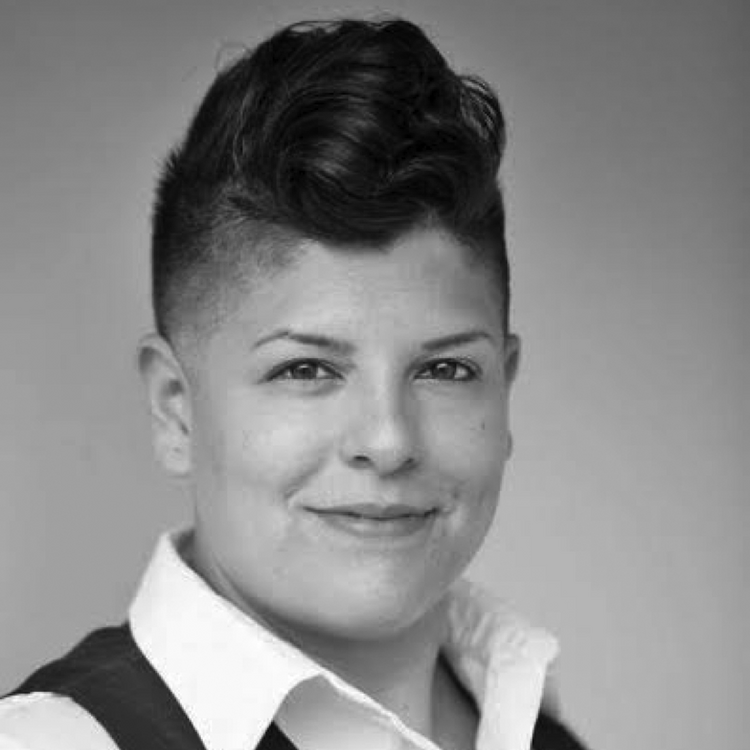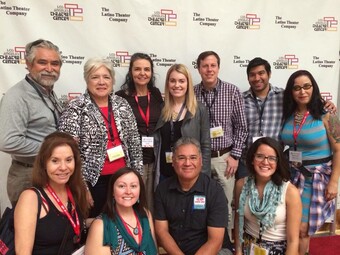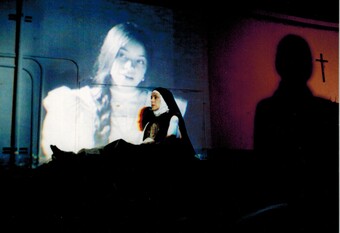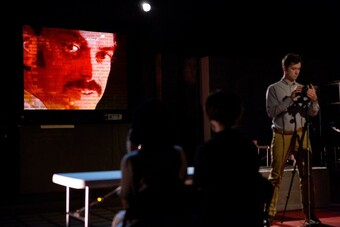Tertulia Reflection
The Cocoon and The Butterfly
Tertulias (or salons) were free events produced by the Latina/o Theater Commons at the LATC Encuentro 2014. The hope was to deepen the conversation revolving around themes brought up by the productions presented in the festival. Harnessing the Power of YO was a conversation about a series of solo shows aimed towards the exploration of politics, history, family, and becoming. Artist from the Encuentro and the Los Angeles community were invited to discuss the challenges and rewards of being alone on stage as they shared their individual methodologies and storytelling techniques that continue to inspire them today.
Writing and performing my work in the LGBTQIA community, (Lesbian, Gay, Bisexual, Transgender, Queer, Intersex and Asexual) I have found that there are not many accessible ways youth and /POC (people of color) of that same community can find theater based on experiences that speak directly to them. It was when I performed Catholic School Daze and did workshops in multiple universities, that I realized how much the story was embraced. It was welcomed because I performed an experience that some felt was their own—they felt their secrets had at last been staged for all to see and through that, they felt vulnerable, emotional, connected, touched, and in disbelief.
My performance, and its process have required me to deal with and talk about trauma. I have experienced and learned from my audiences that the staging of trauma can cause silence; the event itself can be pacifying. In calling the trauma forth through the ritual of performance, I am also causing myself to heal. Writing my performances is a privilege and also a great vessel that carries important themes and events.
I call the process of creating and performing trauma “spiritual work,” because it feels that way. Embodying trauma is a cathartic experience that transforms specific memory that lives in my body, into story-physical manifestation. In reliving the memory through story, I confront my “characters.” Furthermore, I stage the trauma and within in, also stage the transformation that happens after. I stage the appearance of that emotional cocoon, what lives and happens in that phase, and follow us through the emergence of the butterfly. Is it true that a solo piece never stops being done? Perhaps. I believe that it can always evolve. The writer/performer also keeps evolving. For example, in creating the solo piece, I navigate through instances in my life and I pin point the thoughts, actions, and reactions that led me to a particular place, and then I replay the events that lead up to painful moments of suffering. And it is through performance that I can choose the results of those events differently, and in so doing, face my deepest fears; opening a portal towards healing. My question remains: How can I further share this process with the LGBTQIA community, a community that is longing for ways to connect and for ways to heal from their own traumas?
I recognize the importance of staging this particular piece. It is a responsibility much larger than simply telling my story on the stage. There have been moments after performances or workshops when audience members from the community have come up to me to share their own traumatic experiences; they confess to me that they have never heard or seen anyone bring up specific topics because their pain and trauma is taboo. Through my performance, I’ve hit an audience member’s nerve. I realize then that I have struck a chord, and that it needs to continue to be addressed through after-performance conversation, and to continue to be shared outside of the performance space so that it may pave the path towards healing. Many are in need of that continuously shared space: a created and creative space where those who may have never said the words, “I am a cutter” out-loud, can have a voice. Though Self-inflictors may have fewer stigmas, it is a suffering and pain that is shared by many, and there is usually a lot of shame attached to it. Those who identify with that trauma see it performed on stage and it suddenly becomes a release. Self-infliction comes in many shapes and forms, and it was in writing about it that I realized just in how many ways it manifests. I was always aware that drawing from my own experience meant I had to be open to facing the challenges it caused in my own life. This is probably the reason why the ending of the piece is still being written, and will continue to evolve.
Performance has allowed me to understand the root of the pain. Through writing, performing and engaging with the community because of it, I have realized that the real issue behind self-inflicting is about self-love and care. I believe now, that if we can truly take care of ourselves, that dreams, wishes, desires, and goals follow suit in ways that are more rewarding than our imagination could play out. But it was imagination that led for the possibility of seeing the issue in the first place. Understanding that we are in control of putting an end to the patterns of our own oppression has been a critical part of my healing through performance. This path I have taken to create solo work has reinforced and called my spirit forth. The process of the pain towards healing is savored in ways like the result of pressure turning coal into a precious diamond. I make sure I write down my process so I don’t lose those endless diamonds that could come out of my mouth. Performing this piece has shown me to caminarlo con cariño (walk with care) towards myself, and hope that others can benefit from it.
This post is dedicated to Shishir Kurup.








Comments
The article is just the start of the conversation—we want to know what you think about this subject, too! HowlRound is a space for knowledge-sharing, and we welcome spirited, thoughtful, and on-topic dialogue. Find our full comments policy here